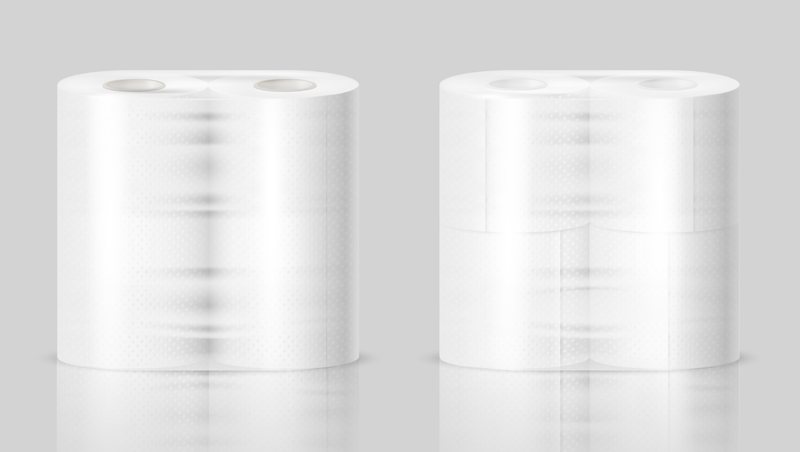21 Apr, 2025

Healthcare and pharmaceutical sectors must be wrapped in packaging solutions that guarantee product sterility, shelf life, and high levels of regulation compliance. Pouch films are the best option to wrap these sectors because they are flexible, robust, and they preserve sterility. As one of the prominent pouch films manufacturers, Pioneer Hygiene understands the important role that pouch films play. This article defines the why of pouch films widespread application in pharmaceutical and healthcare packaging, their applications, advantages, and producer and consumer considerations.
1. Excellent Barrier Protection against Contaminants
Pouch films used to package medical devices and drugs are best at blocking oxygen, moisture, light, and microbial contamination. Most medical devices, including surgical instruments, syringes, and diagnostic test kits, require sterility. Multiple layers of polyethylene, polypropylene, and aluminium foil create impermeable pouch films. This barrier protects delicate products from contamination throughout their shelf life.
In pharmaceutical usage, pouch films protect drugs from drug degradation caused by moisture or oxygen and therefore keep drugs potent. Because such films are non-biodegradable, they ensure environment safety through proper disposal of them.
2. Cost-Effective and Lightweight Packaging Solution
In comparison with conventional rigid material packaging such as glass bottles or plastic containers, pouch films have less weight and use less raw material to make. This makes them an economic option for pharmacy firms and health centres that are required to trim the cost of packaging without taking a toll on the quality of the product. Lighter weight also saves cost on transportation, which makes pouch films an economical option for large-scale shipment.
Other than that, pouch films can be made in different dimensions and shapes for manufacturers to enable maximum storage capacity. Clinics and hospitals incorporate small-sized packing that provides high shelf space utilization without restricting user access to health accessories. Despite that, considering that pouch films are disposable products and non-reusable, the healthcare institutions must have waste handling systems in place.
3. Increased Durability and Tear Strength
Pharmaceutical and medical packaging must be sufficiently hardy to last through abusive usage during storage and shipping. Pouch films have been engineered to be extremely resistant, with rugged seals that are not breakable or likely to open accidentally or allow leakage. Pouch films are generally reinforced edges and puncture-proof sheets so that razor-sharp medical instruments or dense drug products won’t pierce the packaging.
The tear resistance of pouch films also contributes to user convenience as medical personnel can easily open them without subjecting them to contamination. Other top-notch pouch films also possess peel-able seals or notches, which are highly convenient in emergency medical situations where rapid supply gathering is needed. As resilient as the films are, they are also plastic waste, and hence proper waste management procedures must be followed.
4. Printability and Branding Feasibility according to Specification
The pouch films can be printed to an extremely high quality level and enable drug manufacturers and device manufacturers to print such crucial information as dosage, expiry date, and brand detail. High-resolution clear text and images can be easily printed directly on the film, and regulation-compliant labelling can be made possible.
Custom printing is also useful in anti-counterfeiting, where special barcodes, holograms, or QR codes can be printed to verify product authenticity. Pharmacies and hospitals also value concise labelling to reduce the risk of medication errors. While pouch films offer branding and safety, the non-biodegradable nature of the films is a concern where companies have to weigh functionality against environmental issues.
5. Sustained Shelf Life for Delicate Products
Most of the medicines such as injectable, vaccines, and biologics are sensitive to the environment. Films with high-barrier function significantly delay the shelf life of these types of products by protecting them from degrading substances. There are some films with desiccants or oxygen absorbers for introducing stability.
Pouch films allow pharmaceutical firms to prevent wastage by spoilage, and lifesaving drugs reach patients’ hands in their best state. The issue of non-recyclable materials, however, puts the issue of sustainability on the agenda, and manufacturing companies have been compelled to resort to more eco-friendly options whenever possible.
Conclusion
Pouch films find significant applications in pharma and healthcare packaging with regard to higher barrier protection, strength, cost-effectiveness, and sterilization compatibility. As a reliable pouch films supplier, Pioneer Hygiene provides international-quality packaging solutions focusing on product safety.
However, since pouch films are not reusable as well as non-biodegradable, the stakeholders need to take suitable steps in waste management to reduce the damage inflicted upon the environment. With the support of pouch film advantages and avoiding sustainability issues, the pharmacy and healthcare sector can continue to use this type of packaging for right and secure dispensing of goods.
For compliant premium pouch films that meet medical and pharmaceutical standards, collaborate with Pioneer Hygiene for compliant packaging solutions and quality.